Opinion & Analysis
Focus on Fitness: What happens when an average golfer trains like a pro?
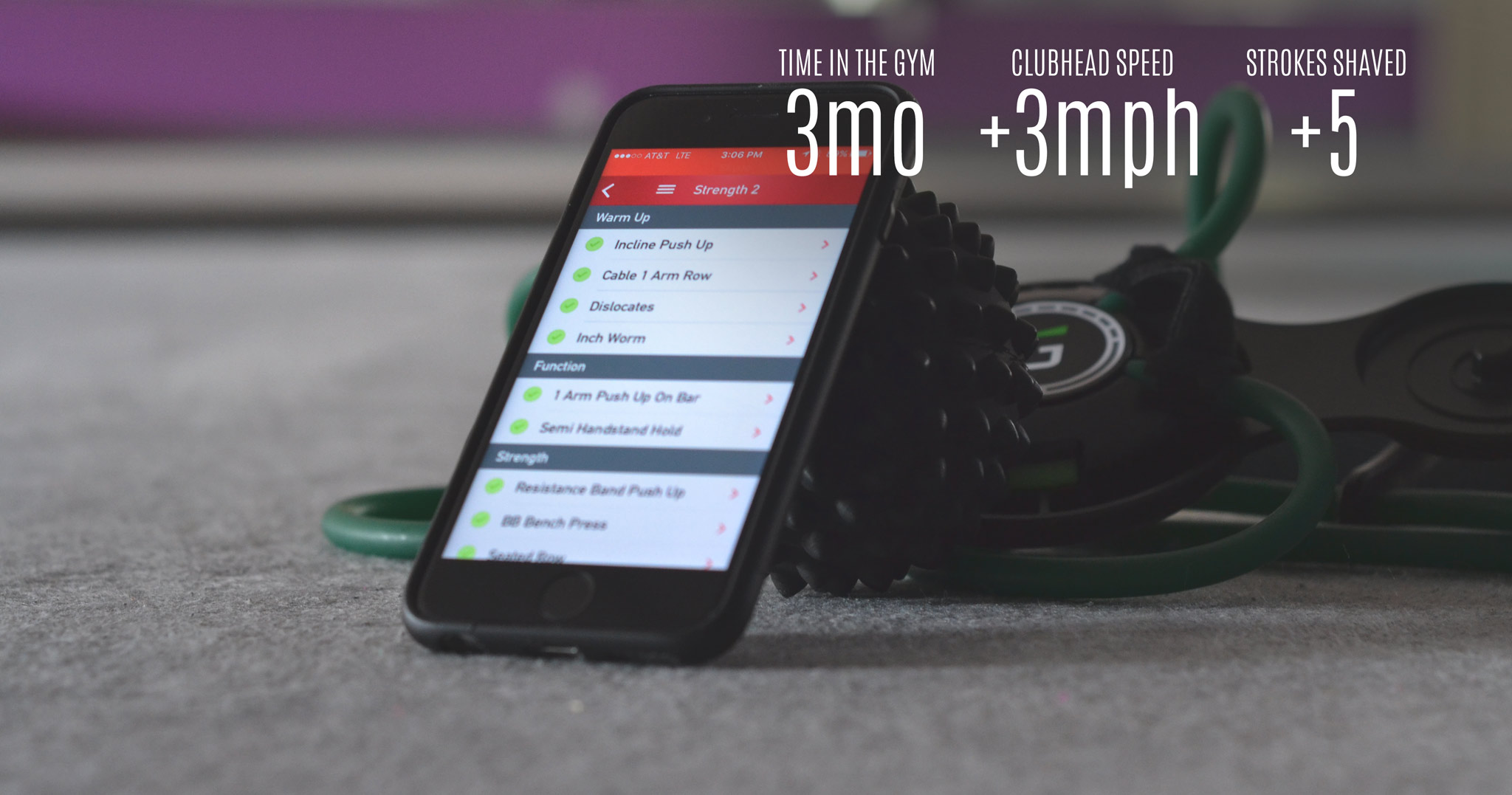
For many years, the words fitness and golf were rarely uttered in the same sentence. But now we can’t go through one commercial break without hearing how athletic golfers are and how everyone can benefit from a focus on fitness. Sure, if we all had a few hours each day to devote to the gym, we’d see an impact. But it got me thinking, can we quantify the impact a focus on proper fitness can play in the golf game of an amateur?
To help answer this question, I reached out to Nick Randall, a GolfWRX Featured Writer and Strength and Conditioning Coach to elite golfers such PGA Tour player Cameron Smith, who enthusiastically jumped on board to help guide me through this process. In addition to his professional clients, Nick offers virtual training to anyone just like what I went through.
The goal wasn’t to simply drop everything and act like a pro. I didn’t get to play golf for a living, and didn’t have the time they have to devote to the gym. The goal was to see if my golf game could improve by utilizing a tour-proven approach to fitness, guided by an elite-level trainer, but adjusted for the time and skill level of an amateur.
Nick was based in Australia at the time (he’s now in Jacksonville, FL), so all our interactions would be done remotely. As a technologist and app developer, this presented another opportunity to test the theory that technology is transforming the way we interact, even when it comes to something like fitness training.
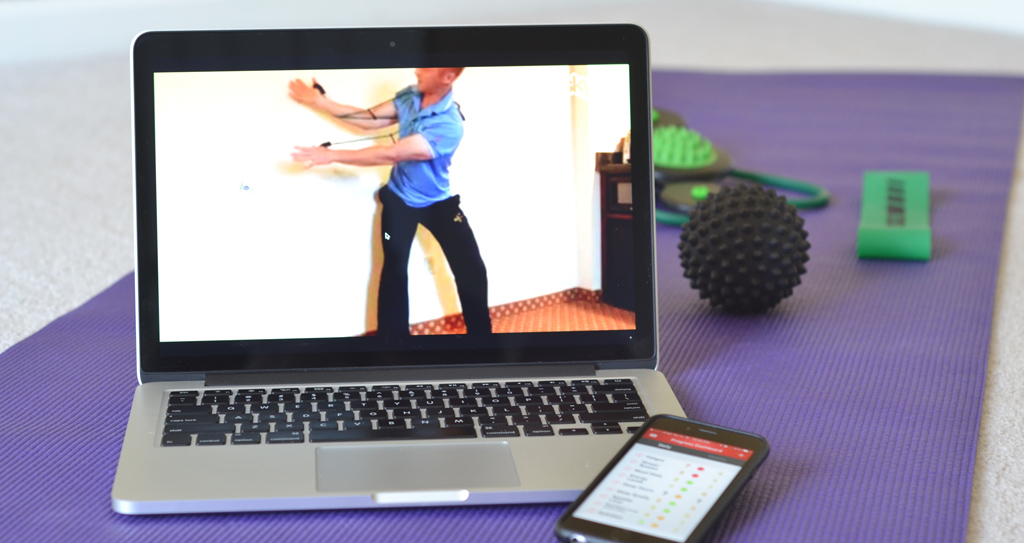
Over the course of four months, Nick guided me through three training programs, a daily motor pattern and mobility program, and nutrition and hydration advice, all via his Golf Fit iOS app, email, and Skype video chats. Our objective was to train the body to rotate more efficiently. This would result in some changes to my swing action, but without the intention of directly manipulating the club face or ball flight. My only swing changes for four months would be a direct result of this training, with no outside input.
I also wanted to be as honest and transparent as possible, so good, bad or ugly, you’ll find links to my DEXA Scans, Trackman Combine results, and swing videos below.
Did it work?
If you are wondering if you should bother reading on, it definitely worked. Physically, I’m stronger and have less back pain every day including after golf rounds or practice. On the course, my misses are tighter, my focus is stronger, and my endurance is better. We’ll cover all of this in detail, but Nick and this experience have fundamentally changed my approach to fitness in my everyday life, as well as my golfing life.
Baseline Evaluation
Any new fitness program must start with an evaluation. There are many ways to evaluate someone and ideally, this would be done in person. With Nick in Australia, we couldn’t do the assessment in person, so we spent a lot of time talking via Skype and I answered a detailed questionnaire. I’ve had back issues in the past, and one of the primary goals of the program was to strengthen that area to reduce daily pain, as well as pain associated with golfing. I have had medical assessments done on my back and passed along my charts to Nick for review.
I also sent Nick videos of my current swing, and we used my initial Trackman Combine videos as well during the evaluation phase.
DEXA Scan
In addition to the written assessment and discussions, I got a DEXA Scan so we could see where I might have imbalances or other trouble areas. A DEXA Scan is a full body scan that measures body composition including total body fat, breaking down bone mass, fat tissue, and lean muscle mass in the body.
To get the scan, I worked with Peter Fisher, the co-owner of DexaFit Atlanta. Let me just say, wow, that was eye-opening. The short, 10-minute scan produced images and reports that laid out how much body fat and lean muscle mass I have. I have too much body fat and that black and white image above was not pretty to see.
We took a look at the reports and decided if I focused on better nutrition, in addition to strength gains, I should be able to take my body fat percentage down to 25 percent (from 32.2 percent). It was a very aggressive goal, but a motivator as well.
Initial Trackman Combine
While we were not planning to make any direct swing changes, such as worrying about my inside takeaway, we did want to get a baseline of my current swing. The best way to do that is with a Trackman Combine, so I headed out to BridgeMill Golf Academy and worked with Tom Losinger, Director of Golf Instruction, who ran me through the combine.
The Trackman Combine is a standardized test that identifies strengths and weaknesses in the golf swing by scoring 60 shots from various yardages. If you haven’t had a chance to take the combine, I highly recommend it.
You can view the full Combine report as well as videos associated with some of my swings, by heading to this site I created.
Overall, I was happy with the results. The Combine was performed on a warm day with very little wind. My score was 69.2. I had 14 shots over 90 points. My max club speed with the driver was 104.8 mph and my longest drive was 278.8 yards.
Nick and I analyzed these results to find areas of weakness that could be attributed to poor body performance. The Combine swing scores are all about distance from the target. While dispersion can be driven by poor swing mechanics, it also is directly related to stability in the golf swing. We identified issues with my turn and posture from the videos and marked my max driver speed down as a baseline for any speed increases I might see.
The Fitness Program
Our fitness plan was broken up into three 1-month long programs. Each week included six days of routines: three strength days and three mobility and movement pattern days. That meant six days a week I was training my body with strength, mobility and movement pattern drills.
To track the progress, we used the Golf Fit iOS App, which Nick created for use with his athletes. Golf Fit is laid out to make it very easy to view your program, which includes photos and descriptions of the exercises, and complete your reps and sets.
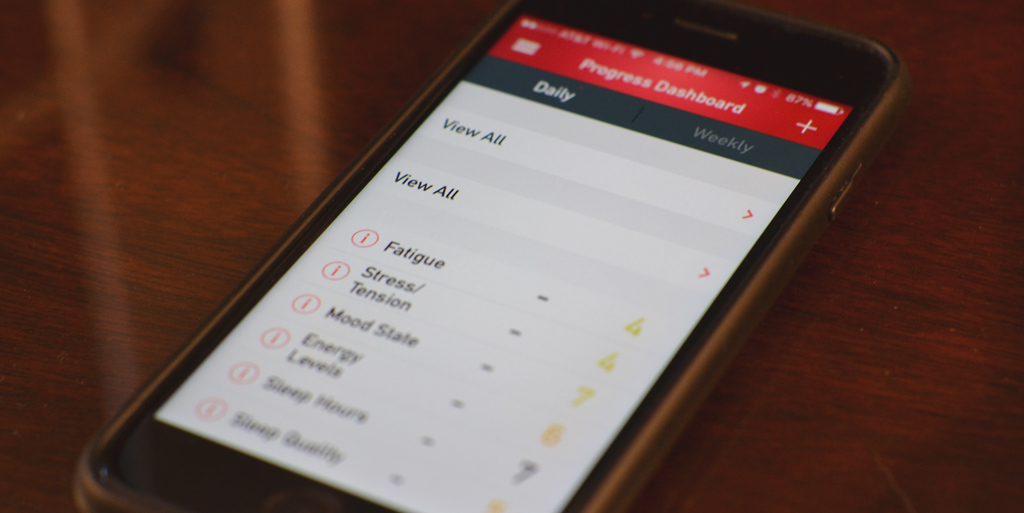
Month 1 was a primer month. It introduced me to some new exercises and eased me into my strength program. Month 2 switched up the exercises and ramped up the intensity. It also added some cardio to the warm up.
Month 3 was the hardest program and the one I found most interesting. It added more dynamic, golf specific exercises such as the Sidestepper with Band. I felt like I was able to better connect the exercise with how they would help my game. The Sidestepper, for example, was designed to activate the glutes and promote lateral stability, something very important during the golf swing.
In addition to the training programs, my favorite part of the Golf Fit app is the progress tracker. Most apps let you track your food or water intake and even how you feel, but they are cumbersome. With Golf Fit, you can easily score your progress, which brilliantly uses your averages as a default option. This made it very easy to track my progress every night.
I had many times over the course of the program, like when we had family in town over the holidays, where I wanted to do almost anything except my workout or nightly program. Everyone would be sitting in the living room, laughing and having a great time, and I’d be standing at the back of the room, Thoracic Pro strapped on, turning back and through over and over. But it felt great when I finished, especially on days like those.
I ended the program strong and even though our research for this story is technically over, my workouts continue. You can view my Month 1 program here and the free Golf Fit iOS app includes photos and explanations of each exercise
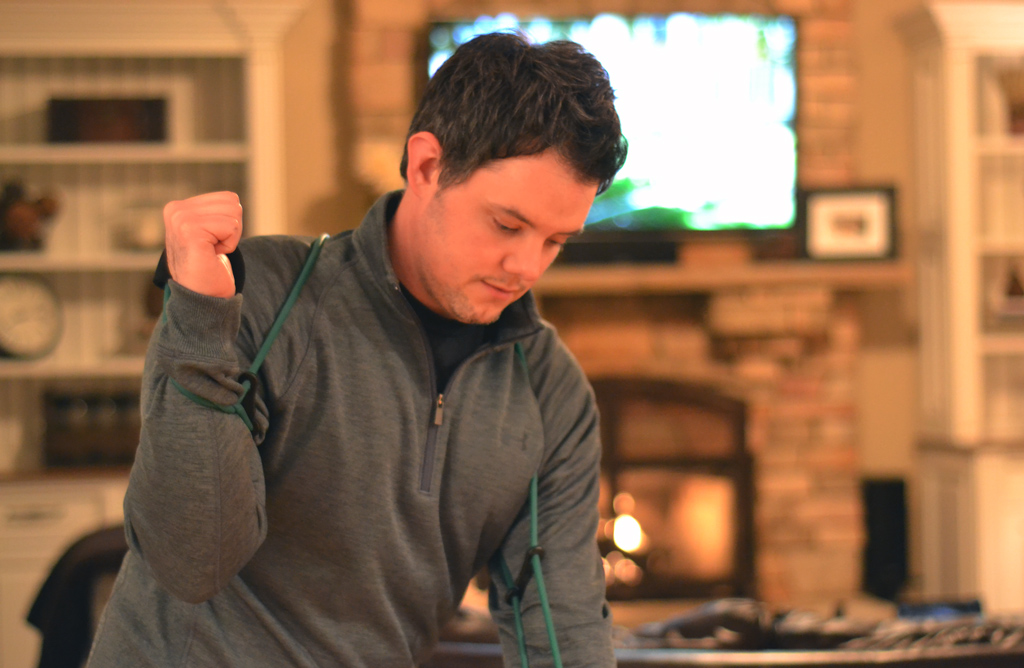
Essential Gear and My Spiky Ball Addiction
I bought two pieces of equipment — a Spiky Ball and the Thoracic Pro — to assist with my exercises, but you don’t have to. You can pick up some fitness bands at your local sporting goods store and be good to go.
I’m in love with my spiky ball. It’s this perfect little ball with raised rubber spikes you can roll anywhere you need to relieve tightness or discomfort. I used it every night to massage my lower back, legs and even chest and arms. Because it is smaller than a foam roller, you can get it into very specific problem areas. If you roll it around a sore spot, you’ll be amazed how loose that area becomes.
I also purchased a Thoracic Pro. My posture and scapula control wasn’t as good as it could be. The Thoracic Pro is a harness you slip over your shoulders and when you properly engage your shoulder blades, a spiky ball in the middle of your back as well as two points on your shoulders, gives you feedback you’re in the right position. All I had to do was pull my shoulder blades back and slightly down. By doing this, I had pre-engaged my shoulder blades. My posture looked shockingly better and my turn was instantly tighter with less moving pieces. Every day for the next few months, I used my Thoracic Pro during the movement and motor pattern routine, and now I feel like it is second nature. I even took it to the range and hit balls with it on, which had a huge impact.
Movement Patterns and Nightly Routine
In order to make any meaningful change in my motor patterns, including the way I turn back and through the ball, I needed a nightly routine. Nick broke this into two programs, one for days where I was training and one for off days. They consisted of a mix of motor patterns with the Thoracic Pro as well as stretching and massage with the Spiky Ball.
These routines quickly became something I really looked forward to every night. It would take about 30 minutes to complete the motor patterns and stretching, and I enjoyed every minute. I got some funny looks from my wife as I was rigged up to the Thoracic Pro, turning and stomping behind her, but it really did work. I cannot guarantee I’ll continue my fitness programs with as laser-like a focus, but I definitely will continue my motor pattern and mobility work every night.
The motor pattern work consisted of the following routine:
Nutrition and Hydration
Nick also offered basic nutrition advice, and he started by getting me to understand the majority of weight loss, which is something many of us want, is driven by nutrition. So eating cleaner became a goal. The Golf Fit app was a huge motivator to eating well and staying hydrated. Each night, the app asked me to score how I did on a scale of 1-10, ten being perfectly clean eating. I never did score a 10, but had quite a few nines. My average was 7-8, which as someone who works long hours and travels, is a comfortable way to start eating healthier.
For this story, the main takeaway is on-course eating. I’m amazed at how little my playing partners eat during a round. I used to only eat one protein bar around the turn. Nick’s recommendation was to take at least two snacks on the course and eat one mid-way through the front and back nines. For his players, he likes the Vega Sport Protein Bar or Macro Protein Bars, although there are others on the market. Adding an extra protein bar to my round made a big difference in my energy level. Below you can see what I typically have in the bag during a round.
I also started keeping a bag of honey glazed almonds with me. I’m not sure Nick would love that I took a perfectly healthy almond and covered it in sugar, but it is a delicious snack packed with protein and healthy fats. And I noticed when I offered my playing partners a protein bar or almonds, almost all of them took the almonds.
As for hydration, I’m convinced the majority of golfers don’t drink enough water, myself included. Why? Because it’s really hard to be fully-hydrated. Based on Golf Fit’s recommendation for my body weight, I need to drink about 110 ounces of water a day (or 7 standard bottles) to be well hydrated. On the course, I tried to drink one bottle every three holes, and I would put a Nuun electrolyte hydration tablet in one of the bottles on each nine holes. I also downloaded a Water App to track my intake through the day which notified me with a reminder to drink every 1.5 hours. You will have to try it for yourself, but when I was fully hydrated I truly felt stronger and less fatigued, which dehydration can cause.
Shots like this awkward sidehill fairway bunker shot (pictured below), where stability and focus are so critical to executing the shot, was where I really noticed the training, and on-course hydration and nutrition pay off.
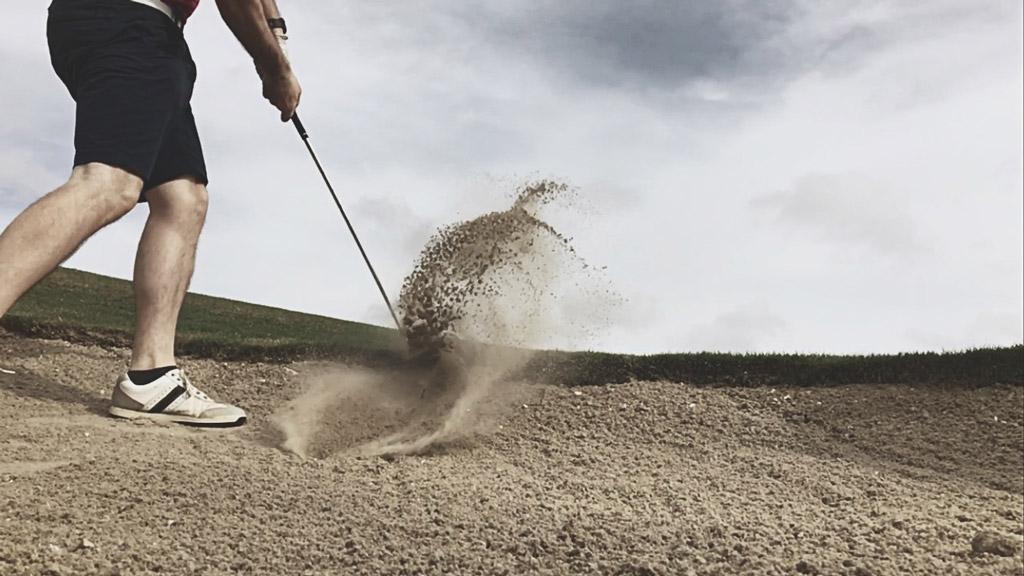
Before and After a Round or Range Session
Pro golfers don’t just show up on the range or the first tee without warming up, so Nick recommended I perform one round of my Motor and Movement Patterns routine before practicing or playing.
One round of the routine takes about 10 minutes, and I noticed a difference when I completed the routine before hitting the range. I didn’t feel like I needed to hit as many short wedges to fire up the body. This helped on mornings where I was first off the tee and the range was barely open. I could roll a few putts and tee off knowing I had already made about 20-30 full turns warming up the main muscles I would need.
I completed the same routine as a warm-down after a round or practice session. Try the following routine from Nick, before you head to the first tee.
Checking in with Nick
Throughout the program, Nick was checking in with me regularly, providing that extra motivation I needed. I was also sharing videos with him like the one below from early in our training program. These check in videos were especially helpful at times when I wasn’t seeing the same on-course progress as I was seeing during practice.
What Can You Do If You Can’t Go All-In?
I went “all in” over the past four months, but I recognize that isn’t for everyone. I’ve talked about this program to avid golf friends of mine and they are intrigued, but likely won’t devote the time I have.
With that in mind, Nick put together a routine anyone can do that will have a positive impact on your game. Click here to download a PDF of the routine.
The Final DEXA Scan
Once I had completed the last of the workouts, it was time to get a follow-up DEXA scan, so I went back to DexaFit Atlanta and worked with Peter Fisher.
We were hoping to see a decrease in body fat percentage and a small increase in lean muscle mass, and I was nervous about how the scan would go. I could tell I had lost weight and was getting stronger, but let’s be honest, if I said I was working out for three months and then got a body scan that shows no weight loss, you probably wouldn’t believe I had actually been in the gym.
I didn’t want that to happen, so I was happy to see I had decreased my body fat by 3 percent (-8.4 actual pounds of fat). Again, if you want to see the raw data, you can view the full results here.
I was initially disappointed by the loss of lean mass. It seemed counterintuitive, because I had been training more, but after talking with Nick it became more clear. I was eating cleaner, and likely taking in less calories despite trying to focus on eating more and better proteins. Our strength program wasn’t about big muscle gains, and we also only had three months. He was happy to see I essentially held onto the muscle mass, while decreasing my body fat. What I also found interesting is that I shed pounds without spending much time doing cardio. Sure, cardio is important, but it showcases the positives of better eating decisions, and what effect they can have on your health.
The Final Combine
I went into the final Combine with a healthy combination of nervousness and confidence. Almost every day for four months, I had focused on modifying my motor patterns or strengthening my body with the specific goal of improving my game. I was seeing improvement on the course, so one test on one day wouldn’t define all the work Nick and I had done. But I wanted to see results in plain, clear data. I headed back to BridgeMill Golf Academy and worked with Tom Losinger again.
We were hoping to see more clubhead speed with the driver and better dispersion overall, driven by a more stable lower body and more solid turn back and through the ball. In plain, clear, data, I saw the results I was hoping for.
I had more shots closer to the pin, more shots scored above 90, more “perfect” shots, and 3 mph more max clubhead speed with the driver. Below are some high-level stats comparing the two Combines. You can view the full report and videos here.
I left the Combine on a high. All the effort looked to be paying off… but we don’t play golf by hitting 60 shots during some test. My year-end trip to Florida, where I would play at least 5 rounds, would be the ultimate test.
Florida Trip and My Golf Game Now
I’ve been going to Florida for a week of golf and vacation every year for the last six or so years. I play at least five rounds during the week and look forward to it all year. I brought my spiky ball and Thoracic Pro with me so I could continue my mobility and motor pattern routines.
Just like the Combine, I was nervous and excited to hit the first tee. It wasn’t a testing bay anymore; it was the first tee on a real course after fully-dedicating myself to this program and plan the last few months. I “needed” to see a meaningful difference in my game.
After my first round, I knew something positive was happening. I was hitting more greens, splitting more fairways, and keeping myself out of trouble. I’ve never been more consistent or had as much control over my swing as I did over the five rounds during the trip. Not only did I lower my handicap and post my cleanest card on a front-9 (1-under), but I didn’t wake up midway through the trip with lower-back pain.
Here is a comparison of five rounds prior to starting this program, five rounds from last year’s trip and my five rounds during my trip this year.
Final Thoughts
A focus on fitness can improve the game of amateurs. Whether you go all-in or take it slow, you can see results. To help get started, you can follow the mini-programs laid out in this story, and there are trainers like Nick all across the country ready when you are.
I won’t say the past four months have been easy. But they also haven’t been hard. Eating healthier, drinking more water, and sticking to my fitness and mobility routines have become a part of my day-to-day life. I can only continue to improve from here, and the longer I focus on fitness, the more likely I am to be able to play this great game for many years to come.
- LIKE314
- LEGIT31
- WOW21
- LOL2
- IDHT2
- FLOP2
- OB0
- SHANK17
Courses
Open Championship courses you can play (and when the best time to book is)

The final major of 2024 is nearly here as the top golfers head to Scotland’s southwestern coast to battle for the claret jug at Royal Troon. Golf’s original major dates all the way back to 1860 and has been played at 14 different courses throughout the United Kingdom (yes, this includes Northern Ireland) providing countless memories including celebrations, heartbreak, and unique moments that will never be forgotten (looking at you Jordan Spieth).
With The Open teeing off less than a week from now, we wanted to highlight some of The Open Championship’s finest links courses that should play when you make the journey to golf’s homeland:
- Old Course at St. Andrews
- Carnoustie
- Muirfield
- Royal Portrush
- Royal Troon
- Royal Birkdale
- Royal St George’s
Old Course at St. Andrews

Do we even need to say anything else? The “Home of Golf”, host of 30 Open Championships, the most coveted tee time in the WORLD, there are a million reasons to have St. Andrews on your links golf bucket list. From the double greens, to the tee shot over the Old Course Hotel, to the walk up 18th fairway with the town buildings framing a picturesque scene (especially at dusk), every golfer should make the voyage to St Andrews at least once in their life.

Carnoustie

Carnoustie – Championship Course
Roughly 25 miles north of St. Andrews lies the devious links of Carnoustie, often recognized by the large white Carnoustie Golf Hotel as the backdrop of the 18th green. While the course has only hosted The Open 8 times, it is considered to be one of the hardest layouts in The Open rota (just ask Jean Van de Velde) although not that long, playing just under 7000 yards from the tips.
Muirfield

Located right next to this week’s host of Scottish Open (The Renaissance Club), this fantastic links layout has hosted the prestigious Championship 16 times since 1892. The narrow fairways and penal rough requires precise shots off the tee while avoiding the devious pot bunkers is a must. The course is set away from the coastline so you won’t get the sweeping ocean views, but a round at Muirfield is one the premier tee times in all of Scotland (so make sure you book early – 12-18 months at least).
Royal Portrush

A view of the new 572 yards par 5, seventh hole designed by Martin Ebert on the Dunluce Course at Royal Portrush Golf Club the host club for the 2019 Open Championship in Portrush, Northern Ireland. © 2018 Rob Durston
Our next stop brings us across the Irish Sea to the northern coast of Northern Ireland and the popular Royal Portrush. Having hosted The Open only twice in its illustrious history, Royal Portrush is a golfer’s dream with 36 holes of pure links golf set against a gorgeous backdrop of the ocean and cliffs. The Open Championship will return to Portrush in 2025 and YOU CAN BE THERE to watch it all in person!
Royal Troon

TROON – JULY 26: General view of the ‘Postage Stamp’ par 3, 8th hole taken during a photoshoot held on July 26, 2003 at the Royal Troon Golf Club, venue for the 2004 Open Championships, in Troon, Scotland. (Photo by David Cannon/Getty Images)
The host of this year’s Open Championship, Royal Troon is home to one of the best par-3 holes in all of golf, “The Postage Stamp.” A downhill 125-yard tee shot to a minuscule green surrounded by bunkers on all sides makes it one of the more challenging holes. Another hole that adds to the challenge is the 601-yard par 5 that used to be the longest golf hole in Open Championship history. This year will be the 10th Open Championship held at Royal Troon, the first since 2016 when Mickelson and Stenson had a battle for the ages in the final round.
Royal Birkdale

For the next course on the list, we have to head down to the northwest coast of England just outside of Liverpool. Consistently ranked in the Top 10 courses in all the UK, this 10-time host of The Open has hosted many other prestigious events such as Ryder Cups, Women’s Opens, and more! The course is laid out with fairways running through flat-bottomed valleys surrounded by high dunes which provide many blind shots throughout the course. The Open returns to Royal Birkdale in 2026 so it won’t be long before it is back in the spotlight.
Royal St. George’s

For the final course on our list, we are staying in England, but heading across to the southeastern side of the country to Kent. Royal St. George’s is 4th on the list of most Open Championships hosted with 15 (1 behind Muirfield) the most recent being Collin Morikawa’s victory in 2021. RSG is the only active course on The Open rota in this part of the UK, but two former hosts (Prince’s and Royal Cinque Ports) are within 3 miles of the property. The expansive course is laid out with holes separated by dunes with heavy rough, undulating fairways, and deep pot bunkers to challenge your game. While it may not be mentioned in the discussions of St. Andrews, Carnoustie, and the like, Royal St. George’s is still a Championship layout that is worth the trip across the pond.

With these big-name courses in such high demand, it is important to note that if you want to play them, you need to start planning your trip early. Golfbreaks by PGA TOUR, the world’s #1 rated golf tour operator, suggests planning and booking your trip at least 12-18 months in advance in order to secure a tee time at the courses you want. The UK & Ireland specialists at Golfbreaks by PGA TOUR have the knowledge to help tailor the perfect golf trip for your group so you can play big-name courses and hidden gems you might not have heard of. If you’re ready to start planning your bucket list trip across the pond, make life easier and go with Golfbreaks by PGA TOUR.
Editor’s note: This article is presented in partnership with Golfbreaks. When you make a purchase through links in this article, GolfWRX may earn an affiliate commission.
- LIKE12
- LEGIT1
- WOW0
- LOL0
- IDHT0
- FLOP0
- OB0
- SHANK0
Courses
Ryder Cup 2025: Crossing to Bethpage – New York State Park golf, Part 1

The 2025 Ryder Cup matches will be held over the sprawling, bruising, Long Island acreage known as Bethpage Black State Park Golf Course. The course has hosted multiple national championships, most recently the 2019 PGA Championship. In September 2025, Bethpage Black will welcome teams from the USA and Europe to contest the 45th Ryder Cup matches. Team Europe, the defending champions, will be led again by captain Luke Donald. The U.S. PGA has not yet announced the name of its leader, yet all sources and speculations point to a 15-time major champion and an eight-time participant in the biennial event.
Bethpage Black will join Oak Hill Country Club in Rochester (1995) as the second Empire State course to host the event. The Ryder Cup matches were played in the metropolitan New York area once before, in 1935 at the Ridgewood Club, in Paramus, New Jersey. It’s fair to say that metro NYC is due to host this world-stage, golf event. I can’t wait. The USA’s loss to Europe in 2023 adds to the considerable drama.
What makes Bethpage Black an outlier in the world of championship golf, is its mere existence. It’s a state park golf course, one of five on property, each with a colorful name. The Red, Green, Blue, and Yellow join big brother Black as outstanding tests of golf in Farmingdale. Of the five, only the Green was not originally built as a state course. The Lenox Hills Country Club, designed by Devereux Emmet, opened in 1923. By 1932, the club had closed and the land had become property of the state. Its birth date made the Green the oldest of the five courses. New York State began to build on a series of adjacent parcels, guided by the hands of Alber “A.W.” Tillinghast, Joseph Burbeck, and Alfred Tull. The Yellow course, built entirely by Tull, was the last of the five to open.
State park courses just don’t hold major championships. Private clubs and elite resorts are the typical sites that receive the nod from the world’s golf bodies. It’s a testament to the lovers of Bethpage, the New York state government, and the PGA of America (among others) that Bethpage is as good as it is, and that it continues to improve. It’s a fitting site for the 2025 Ryder Cup matches, but the 2025 Ryder Cup matches need a beginning to their story. I’ll do my best to provide it.
- Bethpage Yellow Golf Course
- Bethpage Black Golf Course
- Bethpage Red Golf Course
- Bethpage Yellow Golf Course
- Bethpage Black Golf Course
- Bethpage Green Golf Course
- Bethpage Blue Golf Course
- Bethpage Red and Black Golf Courses
- Bethpage Green Golf Course
- Bethpage Red Golf Course
The quintet of courses near Bethpage, New York, is just the beginning of the New York state park golf course system. 19 parks in total offer golf from the tip of Long Island, to the shores of Lake Ontario, through the Catskill mountains, to my home town. I’m a Western New York guy. The Buffalo area has been my home for most of my 58 years on the golf ball known as Earth. I live two miles from the westernmost, state park golf course: Beaver Island. The Beav, as everyone calls it, was designed by William Harries. It opened the year I was born, which means that it is close to 60 years old! Unlike the Bethpage property, where topography is king, the Beav is a flat course, albeit full of enough interest to bring you back for more.
As I considered the magnitude of the state park system, I realized that golfers who frequent those 19 state parks can point to their home course and say, “You know, the Ryder Cup will be at a state park course next year.” I started to count on my fingers, the number of state park courses I had played: Beaver Island, Green Lakes (Syracuse), James Baird (Poughkeepsie), and the five at Bethpage, I realized that I had played eight of the 23 total courses, and had visited a mere four of the 19 parks.
Bethpage is the only, multi-course state park across the Empire State. Other venues range from pitch-and-putt, to nine-hole, to regulation 18-hole courses. The majority occupy nice tracts of land, and feature 18 holes of memorable, enjoyable golf. PGA Tour professionals Joey Sindelar and Mike Hulbert grew up on one of those courses, and Dottie Pepper spent a bit of time on another, near her hometown.
There will be many stories that trace the path to Bethpage and its 2025 Ryder Cup, and I look forward to reading and hearing them. This one is my own, and I’m proud (and a little frightened) to undertake it. I’ll visit each of the remaining parks over the next 16 months, and report in with images and words that tell the story of each park and its golf course.
The Ones I’ve Played
The Bethpage Five
As mentioned above, I’ve played eight of the 23 courses, but the majority of that number is owed to a 2011 pilgrimage to Long Island. The Black had just hosted its second US Open championship, and the ink for the 2019 PGA Championship was not yet printed. I spoke with a Bethpage caddy, in anticipation of the trek. I wrote a series of articles on the courses on my own site, BuffaloGolfer. Down the road of this, current series, I’ll discuss the most poignant piece that I connected with Bethpage. That’s a story for another time. After all, Bethpage is a five-course meal.
It’s safe to say the the Bethpage property is unlike any other, municipal, golfing space in the world (at least, those not named the Links Trust of St. Andrews!) The park encompasses nearly 1500 acres of wooded land and offers much beyond golf to its visitors. As pilgrimages go, Bethpage is it. For a New York state resident, on a weekend, it would cost a total of $257 dollars … to play all five courses. Even for those outside the state, the trip to Bethpage is worth consideration. Each course rambles over uneven, heaving land. Holes carry along falloffs and bend unexpectedly around corners. Greens are benched into hillsides and settled into valleys. All five courses remind you of the others, yet none of them says to you “You’ve played this course before.”
James Baird State Park
One of the hats that I wear, is high school golf coach. Each spring, golfers from my team travel to Poughkeepsie to play the James Baird State Park golf course. Pronounced “Bard,” the course was opened in 1948, after a middle-aged, Robert Trent Jones, senior, put pen to paper to lay out the course. Jones was about to become a household name, as he would offer renovation advice to many of the country’s classic clubs. He was most famously associated with the Oakland Hills Country Club near Detroit, the host site of the 1951 US Open. You know, the one where Ben Hogan purportedly gasped “I’m glad I brought this course, this monster, to its knees.”
Trent didn’t leave a monster in Poughkeepsie. What he left was something that locals call Baby Bethpage. The James Baird course is blessed with topography similar to its five-course cousin, but it offered a challenge that Bethpage does not: a huge expanse of marsh across the belly of the property. There was not going over nor through it, so Jones simply went around it. He created something that he never, ever did: a short par three. Jones was a fan of the brutish, 200-yard plus, all-carry, par three hole. For the third hole at Baird, he had all of 120 yards, and it was downhill! Jones placed a green in the marsh, connected to the mainland by an earthen bridge. He then turned north for a time, then returned south, outside the marsh. Trent Jones had another stretch of tricky land to navigate, this time, on the inward half. He brought a trio of holes (pars 4-3-5) through a challenging corner of the property, before returning to the open meadow that hosts the majority of the layout.
James Baird is a tremendous golf course, one that prepares our high school competitors well for the next step: the state federation championship at, you guessed it, Bethpage Black. Six golfers move on to compete against other, high school divisions, at the big brother of them all.
- James Baird State Park
- James Baird State Park
- James Baird State Park
- James Baird State Park
- James Baird State Park
- James Baird State Park
- James Baird State Park
- James Baird State Park
- James Baird State Park
- James Baird State Park
- James Baird State Park
- James Baird State Park
Green Lakes
The Baird course came to life 13 years after Trent Jones opened his first, New York state parks course. Originally from Rochester, New York, Trent ventured 90 minutes east to Manlius, near Syracuse, in 1935, to lay out one of his first ten courses. RTJ was gifted the magnificent land that abuts the two glacial lakes in central New York. The lakes are meromictic, which we all know means that surface and bottom waters do not mix in the fall and spring, as happens with dimictic lakes.
Trent Jones placed his clubhouse and finishing greens (9 and 18) in an interesting portion of the property. The ninth hole is an uphill, par five that plays fifty yards longer than its measured distance. Once home to upper and lower greens, the lower has been expanded and enhanced, and the upper is now abandoned. On the other side of the clubhouse, the sneaky 18th moves out of a corridor of trees, into the open space beneath the clubhouse. It’s a bit reminiscent of the 18th at Bethpage’s Green course. It’s not a long hole, yet when you walk off with five or six on your card, you wonder where you went astray.
- Green Lakes State Park
- Green Lakes State Park
- Green Lakes State Park
- Green Lakes State Park
- Green Lakes State Park
- Green Lakes State Park
- Green Lakes State Park
The front half of the course plays along a vast meadow, above Green Lake, the larger of the two, nautical bodies. The inward side forages among the tree above Round Lake, before finally emerging at the home hole. The apparent contrariety of the two nines is resolved through expansion of fairway corridors on the treed nine, and the constriction of playing paths with bunkers and doglegs, on the exposed side.
If you’re a walker, Green Lakes will make you a fit one. It will also demand all the clubs and shots that you can fit in your bag.
Beaver Island
“Tame” isn’t the proper term to describe Beaver Island, the state park course near my home. I believe that “calm” is a better term. It may seem ironic, given that the 1965 course occupies a tract of land at the southern tip of Grand Island, where the Niagara River splits east and west, before reuniting at the north end. When we think of the Niagara, we think of the mighty rapids and cascades near the brink and bottom of the falls. At the southern split of the river, however, you can throw a canoe in the water and have a paddle. Beaver Island knows that it is adjacent to the river, but you never get the sense that this golf course borders water. I’ve redesigned the park hundreds of times in my head, moving the golf course to the banks of the river, where the trails, beach, playground, and other amenities are currently found. In the end, not every great golf course can, nor should, be built.
William Harries trained under the famed competitor and architect, Walter Travis. Despite this exposure to the master, Harries went his own way with his golf courses. The most striking difference is in green construction. While Travis was extraordinarily creative and daring, Harries was the polar opposite. His greens are routinely flat and easy to navigate.
He designed a number in the western New York area, including Brookfield Country Club. Originally known as Meadow Brook, the club hosted the 1948 Western Open, won by the aforementioned, Ben Hogan. The majority of Harries’ work was in municipal courses, and he designed Sheridan Park for the town of Tonawanda. That course hosted the 1962 USGA Public Links championship.
- Beaver Island State Park
- Beaver Island State Park
- Beaver Island State Park
- Beaver Island State Park
- Beaver Island State Park
- Beaver Island State Park
- Beaver Island State Park
- Beaver Island State Park
On Grand Island, Harries traced his layout around three ponds. The massive, western one, comes into play on the second through fifth holes. The middle one plays games with the approach to the eighth green. The final one, on the inward side, forces golfers to carry their tee shot over water, to the 14th fairway. Beaver Island bears no resemblance to the topography of the other locales mentioned previously. There is no heaving, no tumbling, no turbulence, along its fairways. Beaver Island is more St. Andrews in its flattish presentation, which makes it an honest, what-you-see, sort of golf course. It’s an enjoyable walk in the park, a not-too-demanding one.
Part Two: south-central New York-Soaring Eagles, Chenango Valley, Indian Hills, and Bonavista
- LIKE2
- LEGIT0
- WOW0
- LOL0
- IDHT0
- FLOP0
- OB1
- SHANK0
19th Hole
Vincenzi’s 2024 Travelers Championship betting preview: Patrick Cantlay to continue impressive play

The third major championship of 2024 did not disappoint as Bryson Dechambeau capped off a sensational week with the second U.S. Open victory of his career. The season rolls along to Cromwell, Connecticut, where TPC River Highlands hosts the 2024 Travelers Championship. This is yet another designated event with a $20 million dollar purse.
TPC River Highlands is a 6,841-yard par-70 that has been a PGA Tour stop for 40 years. Home of the only 58 in Tour history, it is possible to go extremely low at this Pete Dye design. However, TPC River Highlands does feature a difficult closing stretch with holes 16-18 all historically averaging scores over par.
The Travelers Championship will play host to 72 golfers this week. Being a signature event, almost all of the best players on Tour will be teeing it up.
PGA Tour U winner, Michael Thorbjornsen, will be making his season debut this week at the Travelers.
Past Winners at The Travelers Championship
- 2023: Keegan Bradley (-23)
- 2022: Xander Schauffele (-19)
- 2021: Harris English (-13)
- 2020: Dustin Johnson (-19)
- 2019: Chez Reavie (-17)
- 2018: Bubba Watson (-17)
- 2017: Jordan Spieth (-12)
- 2016: Russell Knox (-14)
Key Stats For TPC River Highlands
Let’s take a look at five key metrics for TPC River Highlands to determine which golfers boast top marks in each category over their last 24 rounds.
1. Strokes Gained: Approach
Strokes Gained: Approach sits at the top spot in the stat model this week. The course is relatively short, and golfers with multiple types of skill sets compete here. Iron play is often the great equalizer allowing the shorter hitters to compete, and that should be the case again this week.
SG: Approach Over Past 24 Rounds:
- Scottie Scheffler (+1.61)
- Corey Conners (+1.11)
- Sepp Straka (+0.92)
- Xander Schauffele (+0.91)
- Tony Finau (+0.88)
2. Par 4 Birdie or Better %
With only two par-5s on the course, the importance of par-4 scoring cannot be understated. Whoever plays the par-4s most effectively this week will put himself in the driver’s seat.
Par 4 Birdie or Better % Over Past 24 Rounds:
- Eric Cole (25.4%)
- Scottie Scheffler (+24.6%)
- Patrick Cantlay (+23.5%)
- Rory McIlroy (+22.8%)
- Wyndham Clark (+22.7%)
3. Strokes Gained: Ball Striking
Ball striking combines off the tee and approach and will be the stat I use to incorporate off-the-tee play this week. The over-emphasis on approach play will incorporate golfers who give themselves plenty of birdie looks in the event.
SG: Ball Striking past 24 rounds:
- Scottie Scheffler (+2.56)
- Ludvig Aberg (+1.67)
- Xander Schauffele (+1.57)
- Rory McIlroy (+1.44)
- Corey Conners (+1.31)
4. Course History
Course history has proven to be a major factor at TPC River Highlands. With seven golfers who have multiple wins at the course, familiarity could be the key at the Travelers Championship.
Strokes Gained: Total at TPC River Highlands per round over Past 36 Rounds:
- Xander Schauffele (+2.03)
- Patrick Cantlay (+2.02)
- Brian Harman (+1.98)
- Rory McIlroy (+1.97)
- Scottie Scheffler (+1.54)
5. Strokes Gained: Total Pete Dye Designs
TPC River Highlands is another prototypical Pete Dye track where many of the same golfers play well consistently.
SG: Pete Dye per round Over Past 36 Rounds:
- Scottie Scheffler (+2.49)
- Xander Schauffele (+2.22)
- Ludvig Aberg (+1.86)
- Brian Harman (+1.66)
- Patrick Cantlay (+1.61)
6. Strokes Gained: Putting on Bent/POA Mix
TPC River Highlands is another prototypical Pete Dye track where many of the same golfers play well consistently.
Strokes Gained: Putting on Bent/POA Mix Over Past 24 Rounds:
- Denny McCarthy (+1.41)
- Xander Schauffele (+1.04)
- Keegan Bradley (+1.01)
- Robert MacIntyre (+0.98)
- Wyndham Clark (+0.84)
The Travelers Championship Model Rankings
Below, I’ve compiled overall model rankings using a combination of the five key statistical categories previously discussed — SG: Approach (26%), Par 4 Birdie or Better % (13%), SG: Ball Striking (20%), Course History (13%), SG: Putting Bent/POA (14%) and SG: Pete Dye (14%).
- Xander Schauffele
- Rory McIlroy
- Scottie Scheffler
- Viktor Hovland
- Corey Conners
- Sahith Theegala
- Brian Harman
- Keegan Bradley
- Collin Morikawa
- Tony Finau
2024 Travelers Championship Picks
Patrick Cantlay +2500 (FanDuel)
When a player contends in a major in the previous week, I typically like to fade said player the following week. However, this week feels a bit different to me. Cantlay has been struggling all season, and I can’t help but feel like the former FedEx Cup champion found something during the U.S. Open. I also don’t think he was incredibly disappointed with the result. He played well on Sunday and was impressive over the weekend, finally getting a true feel of what major championship contention felt like. It was all positives for Cantlay at Pinehurst.
Cantlay will now head to a spot where he’s had an incredible amount of success but has not yet notched a victory. In his last six starts at the course, he’s not finished worse than 15th. His best start came last year, where he finished T4. He ranks 1st in the field in Strokes Gained: Total at TPC River Highlands. Cantlay is also a Pete Dye specialist and ranks 4th in the field in Strokes Gained: Total on Dye tracks. The 32-year-old ranks 3rd in Par 4 birdie or better percentage.
Cantlay was spectacular across the board at Pinehurst. For the week, he ranked 3rd in Strokes Gained: Approach, 7th in Strokes Gained: Ball Striking and 10th in Strokes Gained: Putting. I fully expect him to build off of that performance and contend once again at one of his favorite Tour stops.
Sam Burns +3500 (DraftKings)
Sam Burns had a great Sunday at Pinehurst, which is always a bonus heading into the following week. He shot -3 in his final round, which got him into the top ten (T9) in what was a successful major for a player who’s not performed his best in them historically.
Burns is a prolific birdie maker who can win a boat race to -20 as well as anyone on Tour. He’s also had some success at both Pete Dye courses, where he ranks 13th in Strokes Gained: Total over his past 36 rounds, and at TPC River Highlands, where he ranks 12th in Strokes Gained: Total over his past 36 rounds.
Burns has been playing some solid golf of late. He has four top-15 finishes in his past starts including a T13 at the Wells Fargo Championship, 10th at the RBC Canadian Open and 15th at the Memorial Tournament. He has gained strokes on approach and off the tee in five of his past six starts.
The LSU product can win golf tournaments in a variety of ways. His ability to make putts if it turns into a wedge and putting contest makes him a strong candidate to contend this week.
Sahith Theegala +4500 (BetRivers)
Sahith Theegala has been playing some solid golf over the last few months. As we saw last year with Keegan Bradley, a missed cut at the U.S. Open shouldn’t necessarily scare someone off from a player who fits TPC River Highlands, which I believe Theegala does.
TPC River Highlands is the site of Theegala’s near victory a few years back. He finished in a tie for 2nd in 2022 after making double-bogey on the 18th hole with a one-shot lead, losing to Xander Schauffele. Theegala will now head back to the course as a more mature player who is in the midst of the best season of his career.
This season, the former Haskins award winner in having strong finishes in some of the season’s most important events. He finished 5th at the Waste Management Phoenix Open, 6th at the Arnold Palmer Invitational, 9th at the PLAYERS Championship, 2nd at the RBC Heritage and 12th at both the Memorial Tournament and PGA Championship.
In his past 24 rounds, Sahith ranks 12th in Strokes Gained: Approach, 11th in Strokes Gained: Ball Striking, 18th in Par 4 birdie or better percentage and 8th in Strokes Gained: Putting on Bent/POA mixed putting surfaces.
If this turns into another shootout, Theegala has the type of ball striking and putting combination that can win a race to -20.
Sungjae Im +6600 (BetRivers)
After seemingly regaining his form over the past month, Sungjae took a step back at last week’s U.S. Open. The South Korean missed the cut, shooting +10 over his first two rounds. Despite the disappointing result, I don’t believe one poor start at a long and difficult golf course is enough reason to give up on him.
Although the score was regretful at Pinehurst No. 2, Im hit the ball pretty well from tee to green. In his two rounds, he gained strokes both off the tee and on approach. His downfall was with the putter, which can be extremely hit or miss, especially over the course of this season.
Prior to the U.S. Open, Sungjae had finished in the top ten in three of his previous four starts. He finished T4 at the Wells Fargo “Signature Event” at Quail Hollow, T9 at the Charles Schwab Challenge and T8 at The Memorial Tournament. He’s also gained strokes off the tee in nine straight events.
Im has made three starts at TPC River Highlands, finishing 21st, 58th and 29th respectively. Im hits fairways at a high clip, which will be a massive advantage this week and his lack of driving distance won’t be an issue. He also ranks 12th in the field in his past 24 rounds in Strokes Gained: Total on Pete Dye designs.
It’s been a long time since Im has won an event (2021 Shriners), but I believe he’s back on the upswing and is still a higher end talent on the PGA Tour with another win coming soon.
Tom Kim +6600 (BetRivers)
After a sluggish start to the 2024 season, Tom Kim has come on strong over the past month or so. The South Korean started his stretch of impressive play at Valhalla for the PGA Championship, finishing 24th. After that, Kim put together finishes of T4 at the RBC Canadian Open and a T26 at last week’s U.S. Open. In between, he finished T43 at The Memorial, but hit the ball great from tee to green.
Tom has done an impressive job of playing well at long and difficult setups, but this week, he will head to a course in TPC River Highlands that should his game immaculately. Both of Kim’s wins have come at short setups that mitigate his biggest weakness, which is driving distance. The course is short this week and fits the mold of the tracks Tom has had great success at over the past few seasons on Tour.
In his past 24 rounds, Kim ranks 7th in Par 4 birdie or better percentage, which will come into play this week. He also ranks 19th in the field in Strokes Gained: Ball Striking.
Kim is already a three-time winner on the PGA Tour and has shown that if he gets a sniff of contention, he can close out a tournament with the best of them.
- LIKE30
- LEGIT11
- WOW2
- LOL0
- IDHT0
- FLOP0
- OB1
- SHANK3
-

 Product Reviews1 week ago
Product Reviews1 week agoThree Swing Challenge: Testing the Edel Array F-2 putter
-

 Equipment1 week ago
Equipment1 week agoWhat clubs do equipment free agents choose to use on tour? We found out
-

 19th Hole3 weeks ago
19th Hole3 weeks ago‘You’re right, we’re always wrong!’ – Sergio Garcia receives warning during Open qualifier
-

 News2 weeks ago
News2 weeks agoHighlights from the Wilson Golf Product Testing and Fitting Experience at Pinehurst
-

 News2 weeks ago
News2 weeks agoDavis Thompson’s winning WITB: 2024 John Deere Classic
-

 Equipment3 weeks ago
Equipment3 weeks agoQ&A: The truth behind Bryson DeChambeau’s new Avoda irons from company founder Thomas Bailey
-

 19th Hole2 weeks ago
19th Hole2 weeks agoMajor champ ‘disappointed’ not to be chosen as U.S. Ryder Cup captain
-

 Whats in the Bag3 weeks ago
Whats in the Bag3 weeks agoCam Davis’ winning WITB: 2024 Rocket Mortgage Classic

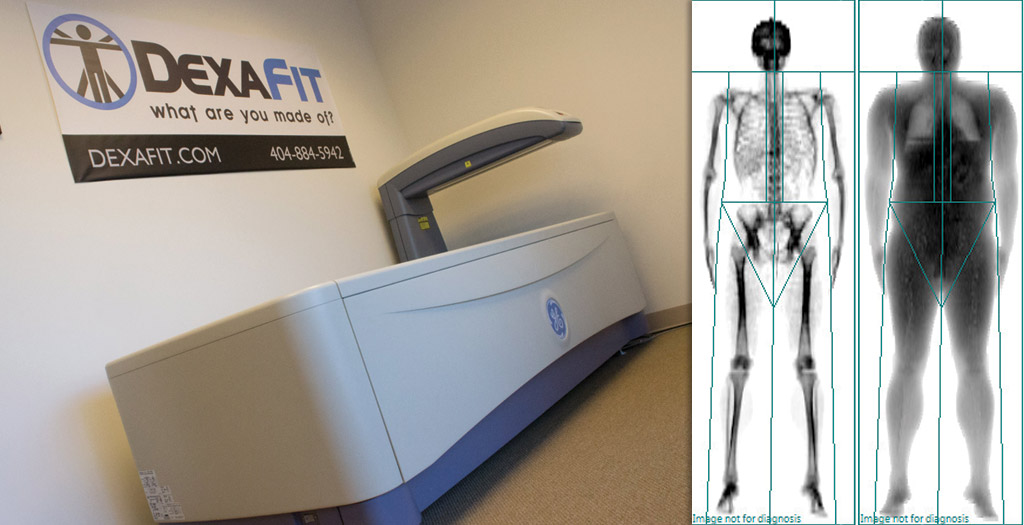

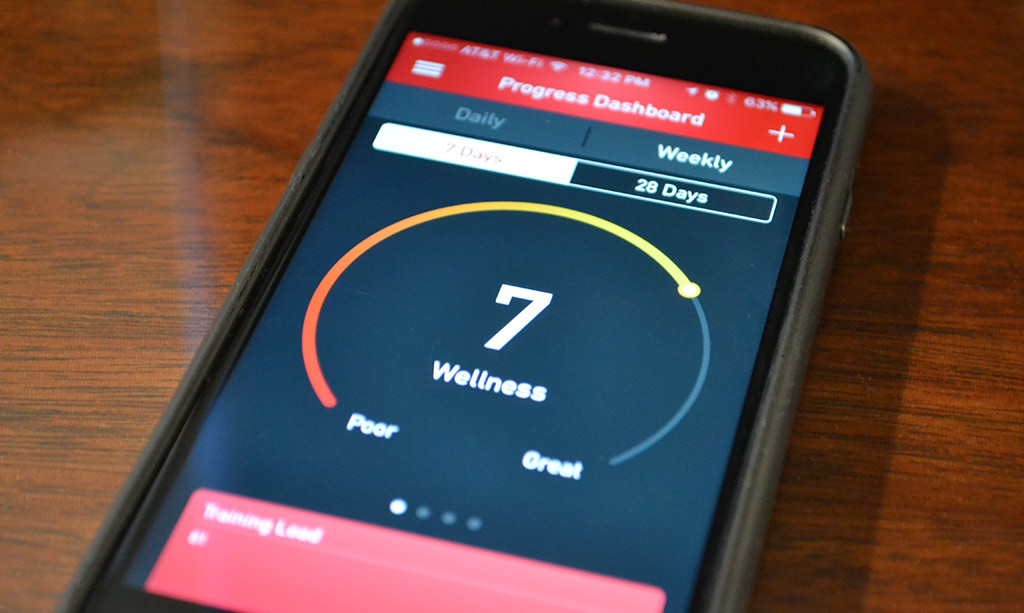
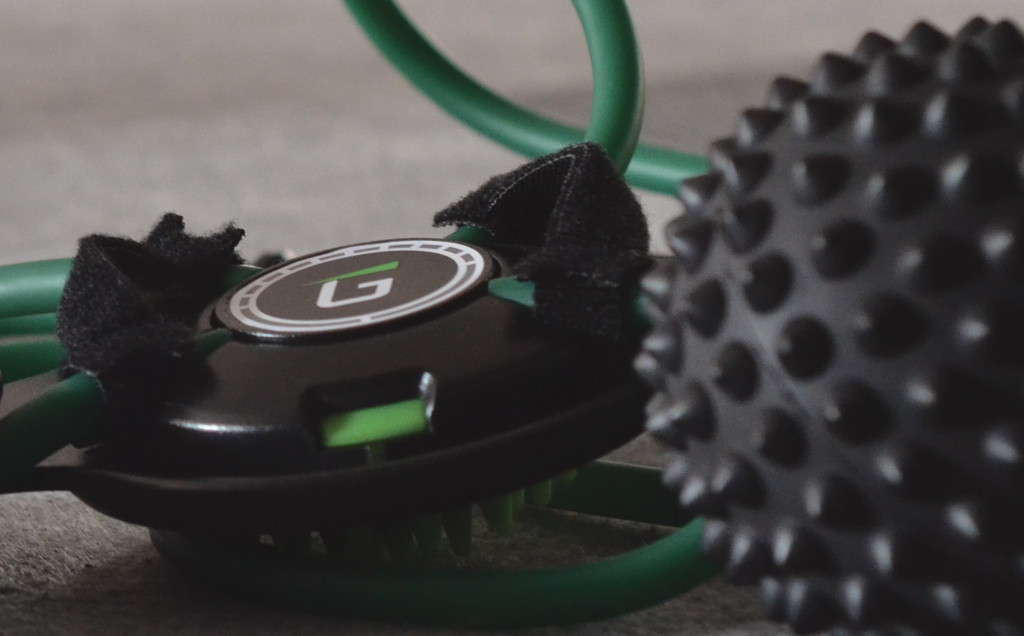
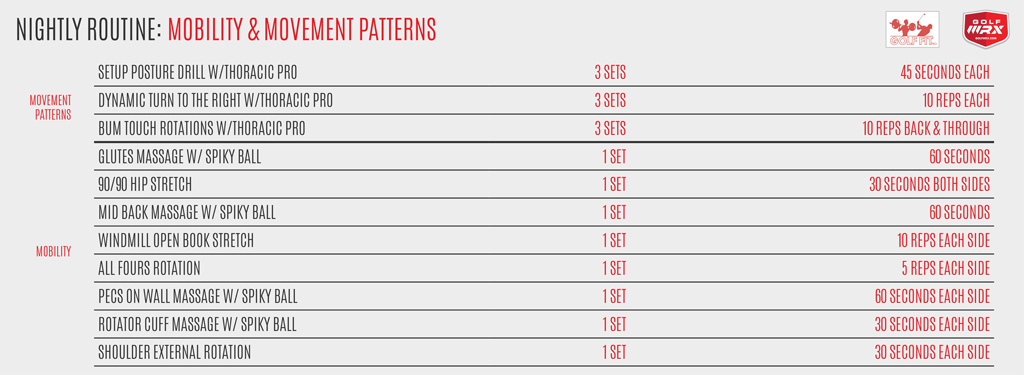
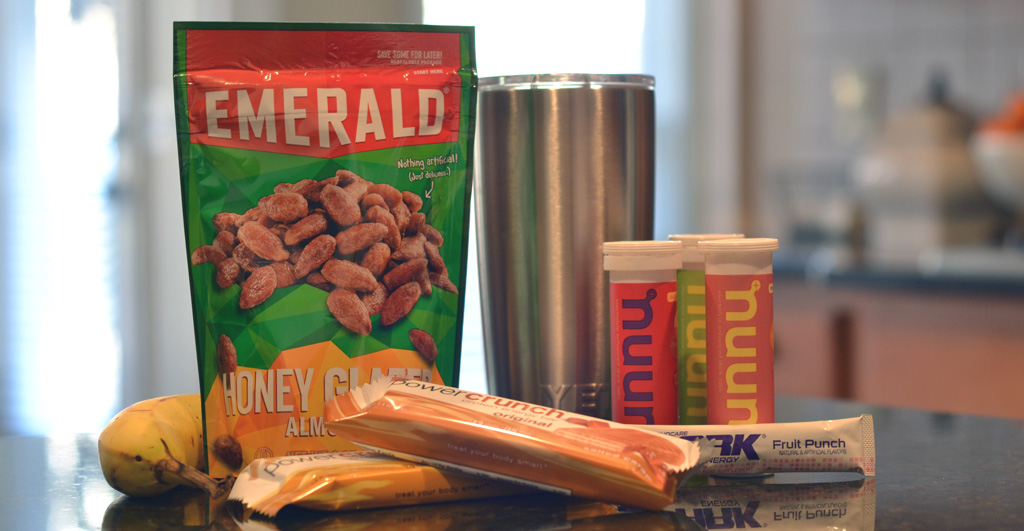

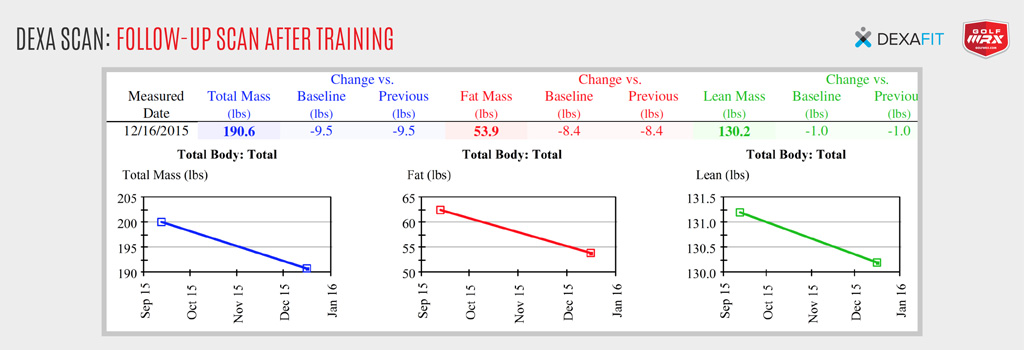



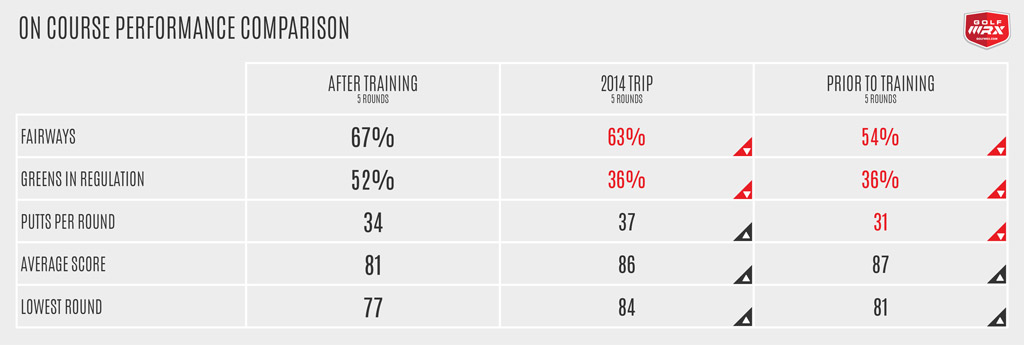



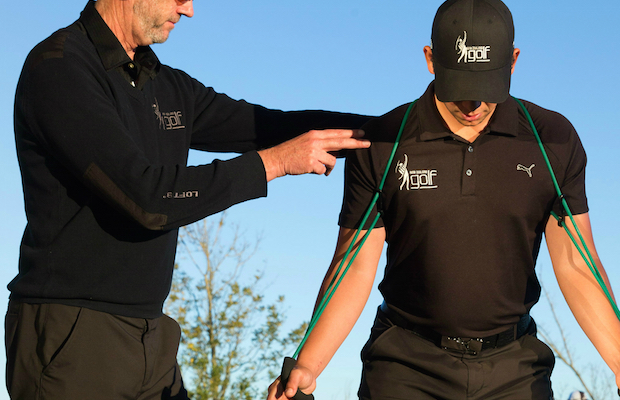
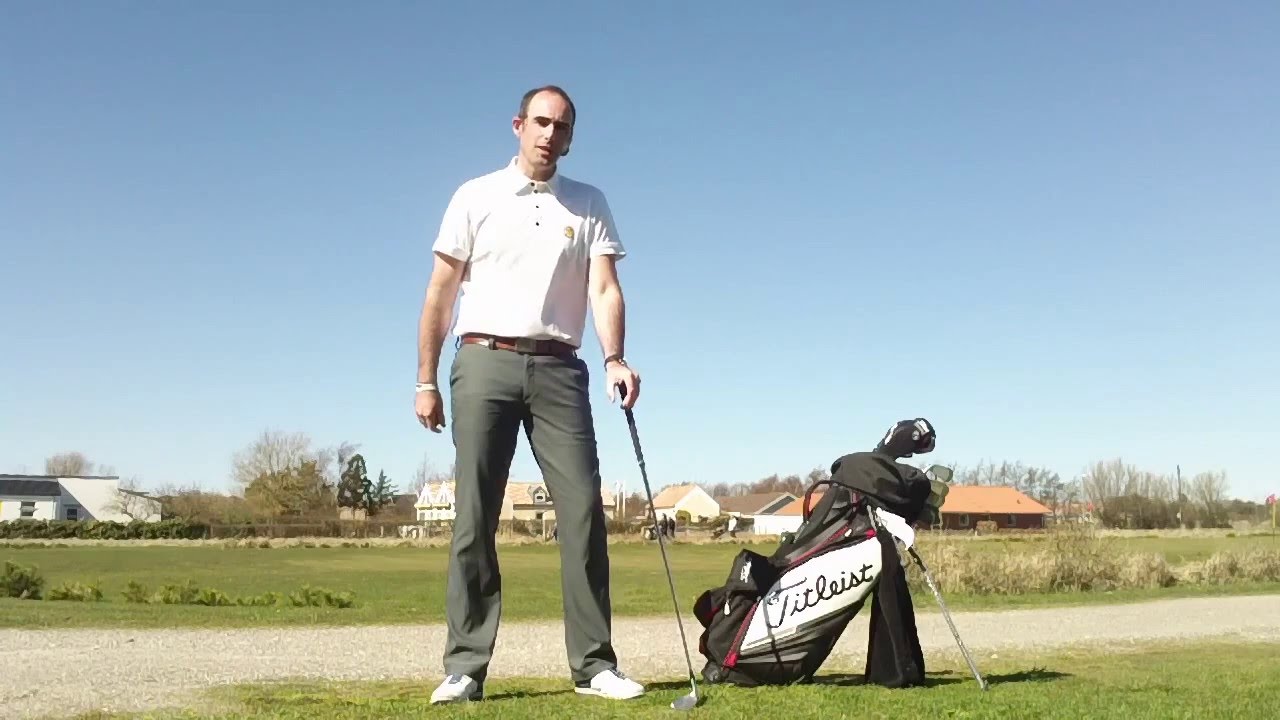

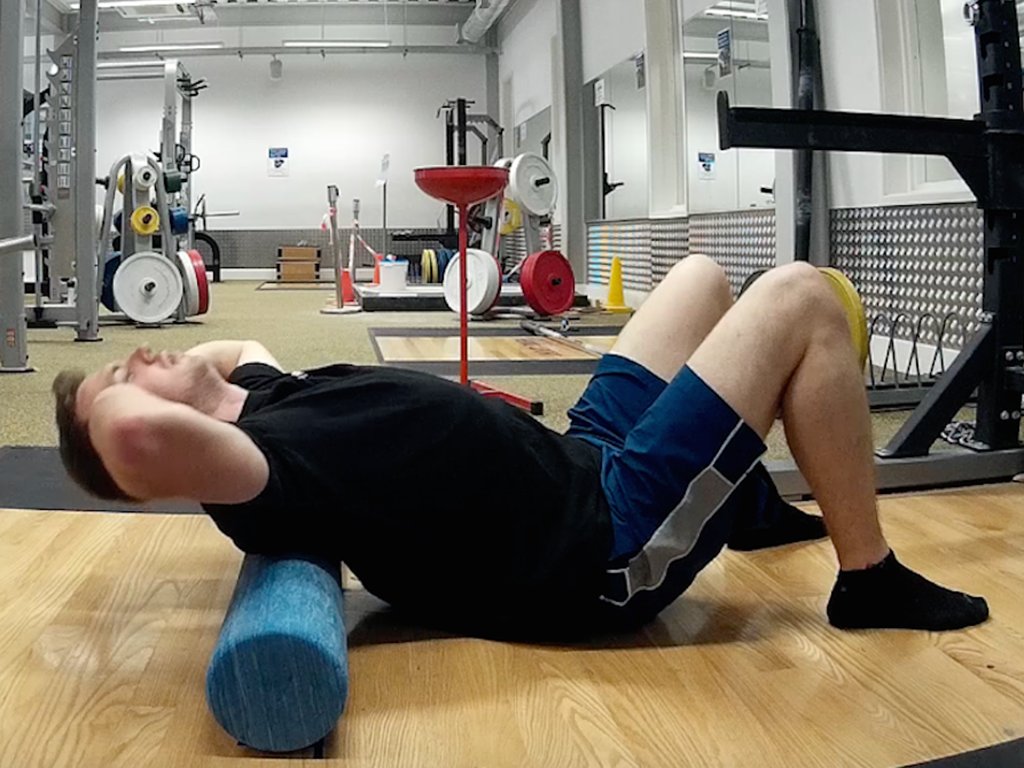























































Scott
Jun 2, 2016 at 4:46 pm
Thanks for the article Kane. My biggest thought through this article was how are you a 10 handicap? You have a good swing and more than enough club head speed. Anyway, appreciate the time you put into this to help motivate me to improve my golf conditioning and game.
Nathan
Apr 19, 2016 at 2:37 pm
Good article! I am glad that the topic of fitness is catching on in our sport. However, I am very leary of Advocare products, particularly Spark, due to potentially harmful ingredients. So I would recommend closer inspection into that aspect of this article. Otherwise, keep it up!
Kane Cochran
Apr 19, 2016 at 3:28 pm
Thanks for your comments, Nathan! Spark is something I have had in my bag since prior to working with Nick (replacing coffee on early morning rounds and giving me a more flavorful way to drink 24oz of water early in the day). It was not part of this program or his nutrition advice. While I did research the product prior to starting to drink it, I’ll take another look, especially at their use of artificial ingredients like the sweeteners. Thanks for sharing your thoughts.
AC
Apr 18, 2016 at 8:26 pm
Thanks for the article. Is there a discount code available for Golfwrx members for the Thoracic Pro and Spiky Ball? Who do we contact to purchase?
Kane Cochran
Apr 19, 2016 at 9:17 am
Hey AC – You can use the code – WRX Article – for a 10% discount on the gear on Golf Fit Pro. You can purchase them here http://www.golffitpro.net/collections/equipment Enjoy the gear!
Kevin
Apr 18, 2016 at 3:07 am
Just go on You Tube , put in Titliest Performance Institue . I started Pilates 2 years ago SS wss 95mph now 102/104mph, all down to improved mobility. Interesting article though, but go practice short game and really see the over all performance
Ron
Apr 17, 2016 at 7:29 pm
This was a great and inspiring article. It’s a bit intimidating because it doesn’t feel like the Trackman, Dexa and other diagnostic aspects of your process are available to golfers who are not geographically close to the areas where these items are located. I would be happy to go through the process but I don’t really know where to find them near me.
Also, golffitpro.net is a mess. I’m sorry to say this because I was very inspired to do my own version of your program. I downloaded the iPhone app but had a real problem figuring out how to do the exercises. For example, he says for the initial exercise “Stop and pulse working through 3 speeds 33-99”. I had to search around the web to figure out what that means. Also, you need his equipment to do the workout, but at least 2 items are out of stock with no promise of getting more. That is very unimpressive.
Also, the PDF you linked to in your article with a sample workout is meaningless without instructions about how to do the exercises. His whole website is very user unfriendly.
The app is also problematic in that you set the timer but there is no audible signal for when the timer is over.
I would love to see a follow up article that’s a little bit more accessible to readers. Thanks.
Nick Randall
Apr 19, 2016 at 1:15 pm
Hi Ron,
Sorry to hear about the issues you have with the website. I have to say that this is the first negative feedback we have received regardless usability of the site, we will look into it.
Regards the 33-66-99 concept, see below for an explanation.
The timer on the app is being fixed in our latest round of app improvement work and will be available in the next update.
The example PDF program exercises can be found on the app, with photo and text explanations.
We are now back in stock for the items featured in the article.
33-66-99 principle
Ramsay McMaster developed the 33-66-99 principle as a guideline for intensity. He believed it could be applied as a philosophy to everything from your energy levels, to your warm up pre-round, to your golf swing tempo out on the course.
“It’s about making people aware of their energy levels as well as their feels, range of movement, endurance and body controls. If 99% is your peak and when you feel sharp, then 33% is when you feel sluggish, tired and fatigued physically.”
My understanding and interpretation when applying the principle to posture exercises and golf movement pattern drills is to consider 33-66-99 as 3 different levels.
33 is like the start level, doing the movements slowly and really concentrating on using good technique and learning the exercise.
66 is for once you have mastered 33 and are able speed the movement up and use more intensity whilst still holding good form and posture, thus increasing bio feedback and gaining more awareness of key areas in your body.
99 is where you are working at near maximum intensity and speed, looking to really fire up your golf body “feels” and ingrain the movement pattern into your “muscle memory”.
Sean Foldy
Apr 16, 2016 at 7:43 am
You have virtually zero hip turn in your swing, maybe that’s intentional or maybe you have serious physical limitations? To me it seems counter-intuitive to be training you core muscles when you don’t appear to be using them in your swing.
michael johnson
Apr 16, 2016 at 6:06 am
dear kane,
your short game sucks.
best, mjohnson
Christian
Apr 16, 2016 at 1:45 am
Reel them in with the misleading headline and then “the idea wasn’t to drop everything bla bla”
Joe the F Buck
Apr 16, 2016 at 12:18 am
I bet your numbers would have been even better if you had done a p90x type of program.
COGolfer
Apr 15, 2016 at 11:31 pm
Average golfer in the title was quite misleading. Much better to start with a good swing than it is to be in peak fitness. Interesting none the less.
:-ppp
Apr 15, 2016 at 10:31 pm
You know what happens? I pull my groin and get a hernia, and I can’t hump for a couple months :-ppp
John-Michael Fawley
Apr 15, 2016 at 4:12 pm
Very interesting article Kane. I have been looking to do something similar to this, but on a cheaper scale. My one question is, should a person actually have a evaluation to make sure the program that they are being put on will work best for them? Everyone has their own points they need to work so some exercises will help, but others might not. I would think it should be tailored to each person.
Kane Cochran
Apr 15, 2016 at 5:09 pm
Hi John-Michael – Thanks for your comments. I would 100% recommend a personal evaluation. In-person or, if you want to go with a route similar to the one I went, via skype with additional data (swing videos, charts, etc) to help create a clear picture. You are completely right, everyone has different areas they need to work on. I wanted to share exactly what I was working on in the program, for the sake of transparency. And we wanted to include some more general starter programs, but it should be tailored to each person. That is something Nick is very big on as well.
Nevin
Apr 15, 2016 at 1:50 pm
Interesting and useful article. Thank you.
Smoking Gun
Apr 15, 2016 at 1:18 pm
Money, time, and talent!!! If you are a working human being, married with kids you can forget becoming an elite golfer. When are you going to find the time? Heart, passion, and ability play just as big a part if not bigger than that!
larrybud
Apr 16, 2016 at 5:20 pm
You don’t need money to eat right (in fact, it’s cheaper than buying processed food and going out to eat), and it’s not like you need to spend 3 hours in the gym every day.
Raven
Apr 15, 2016 at 12:29 pm
So what you are saying is that being fitter and stronger helps you perform a physical task better? Who knew! Seriously, if anyone has the time to increase their focus on a task in a productive, educational manner then they will learn from it. Very few of us have that time, and even fewer improve without that level of effort. Your article could have been generalised for anything in life.
DC3
Apr 15, 2016 at 12:48 pm
I bet you’re delightful at cocktail parties.
larrybud
Apr 16, 2016 at 5:23 pm
What were you hoping from this article, that you’d play better if you woke up drunk?
David Smith
Apr 15, 2016 at 12:11 pm
Kane: the website says that the thoracic pro is out of stock. Any idea how/when/where we can get one? Thanks.
Kane Cochran
Apr 15, 2016 at 5:10 pm
Let me check with Nick and see if there are other options for you. I’ll let you know as soon as I find out.
Bogeypro
Apr 15, 2016 at 10:38 am
How much did all the personal training with Nick cost (ballpark figures, if you don’t want to be too specific)?
Big Slice
Apr 15, 2016 at 12:24 pm
Personal coach, trackman sessions, body scans. My guess is this would run the avg golfer a few thousand $.
Kane Cochran
Apr 15, 2016 at 5:05 pm
Nick has various levels of of training programs (http://www.golffitpro.net/products/golf-fit-pro-online-coaching) but one that is most similar to this one is $99 per month.
AllBOdoesisgolf
Apr 15, 2016 at 10:10 am
so, what I want to know, what is it like in the future? Who is running for President? Is there good weather in August 2016 and are we looking at a lot of snow in December 2016?
Milo
Apr 15, 2016 at 9:37 am
How much did this cost?
Kane Cochran
Apr 15, 2016 at 11:29 am
Hi Milo – DexaFit Atlanta, Tom Losinger at BridgeMill Golf, and Nick donated their time to make this story possible. For the spiky ball and Thoracic Pro, I paid the wholesale cost. Nick is willing to give GolfWRX readers a discount on the Spiky Ball and Thoracic Pro. If you’re interested, just let me know.
Here is an estimated breakdown of costs: DEXA Scan = $150 for each scan. Trackman Combine = $125 or less for each session. Thoracic Pro = $89. Spiky Ball = $12.90. Nick has various levels of training packages. I will post a comment on his ballpark costs soon. Hope that helps.
Milo
Apr 15, 2016 at 3:43 pm
Actually not as much as I thought. But still some good coin. Thank you for the answer.
Large chris
Apr 15, 2016 at 7:59 am
It’s all good stuff and well done for the commitment, although generally if you spend the equivalent time just practicing the short game and putting you would also see score improvements…. The only thing I would take issue with is this modern mantra of eating and drinking constantly to keep hydrated and keep energy levels up. It really isn’t how the body is designed, if you read about IF (intermittent fasting), caveman diet or even typical housewife 5/2 diets it is clear that the human body is EXTREMELY adaptable to short term variances in calorie, macro and hydration levels. We’d have died out as a species 5000 years ago if that wasn’t the case when one big meal a day was the norm.
Philip
Apr 15, 2016 at 9:50 am
For calorie intake I am at my best when I am slightly hungry so that my blood does not rush to my digestion area. However, for hydration I quickly fade once it kicks in. I would expect most people live a large part of their lives being slightly to moderately dehydrated, especially during outdoor activities. I’ve drunk 4-5+ litres of water during a round and never had to pee until the next morning. We can lose a lot of water when outside. Surviving and being at our optimal are not the same thing.
tony
Apr 15, 2016 at 2:30 pm
agreed with this line of thought. i can go to work and function on 2 hours of sleep. am i going to be in top shape to perform at an optimal level at work on 2 hours of sleep vs. 7….No.